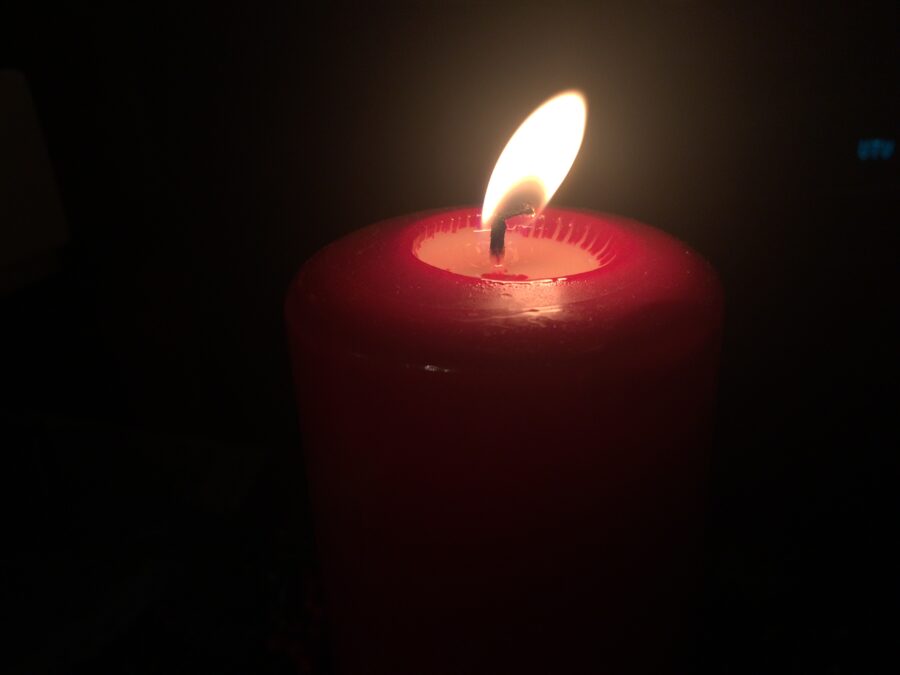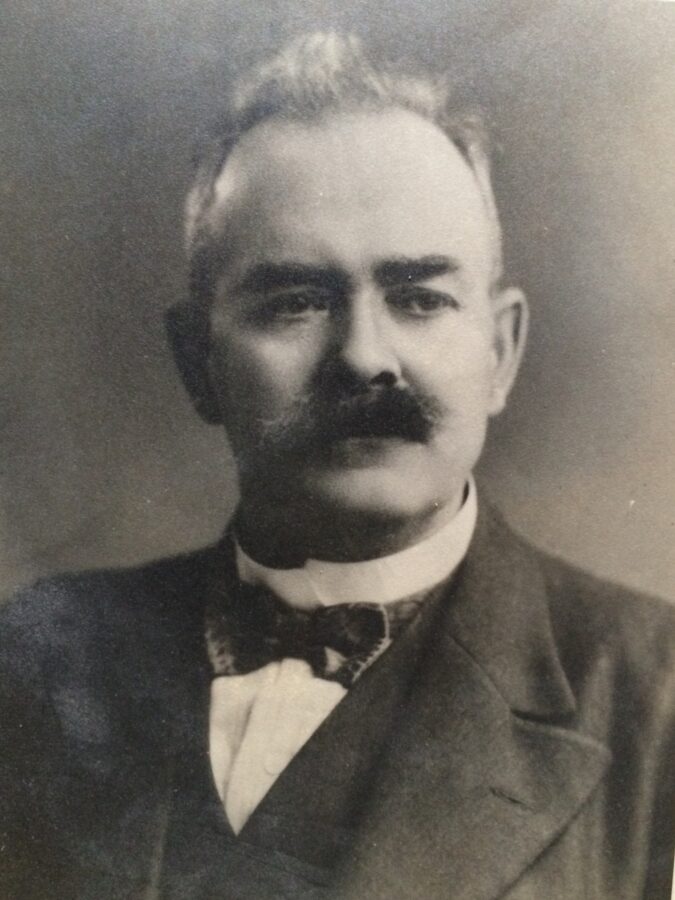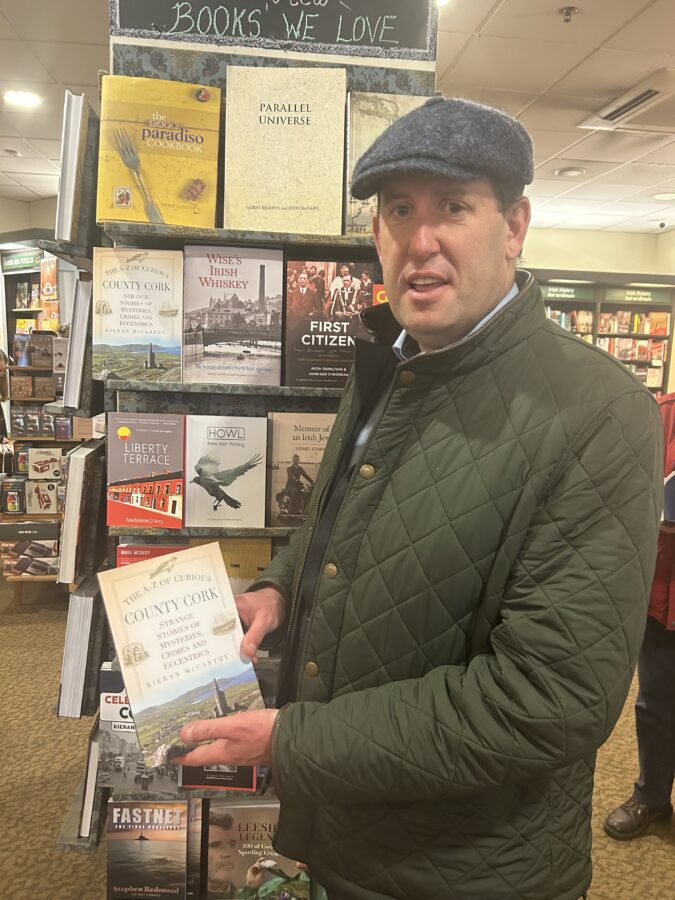The Power of Place:
They say that stories have the power to stop, impress, make one question, make one wonder, make one dream, make one remember, make one be disturbed, make one explore and make one forget – a whole series of emotions. In a historic city such as Cork, one could easily say that such emotions run rampant in approaching all aspects of the city’s stories.
Indeed, the more one studies the vast narratives at play in Cork City, the more they pull you in to study them more. The more they pull you in the more one gets under the skin of our historic city, one becomes even more enamoured by the rake of very interesting narratives, which created our beautiful city.
There were two events at which I recently spoke at and launched, which re-connected the relevant areas back to their history.
A Bridge Through History, Vernon Mount Bridge:
There has been much anticipation for and much looking forward to the opening of the pedestrian and cycling Vernon Mount bridge for many years – mainly down to the dedication, ambition and vision of the immediate community in Grange in particular on the northern ridge here.
Indeed, much of the call for a new connecting bridge has also been bound up with the strong sense of pride and place in the area and the need to renew and reconnect the sense of pride and the sense of place up physically and symbolically to nearby neighbourhoods.
There is now a new bridge now re-connecting the proud neighbourhoods of Grange to the proud neighbourhoods of Ballyphehane and Douglas and Turners Cross. In the past, before the motorway was connected up you could wander across the Tramore Valley river plain across the many historic and informal human pathways.
Indeed, where the bridge is located there are many stories, embedded in the local landscape – the story of Ballyphehane townland, where Tramore Valley Park stands. Baile an Feitheáin stands for the townland of the sharp grass or marshland; the story of the public commons land on this swamp in the eighteenth century; the story of the sailcloth factory, which created Douglas village in the early eighteenth century; the creation of the beautiful Vermon Mount House and estate by the Hayes family; in the mid nineteenth century, the story of the adjacent Cork Union Workhouse; in the late nineteenth century, the advent of the two railway lines Cork Macroom Railway Line and the Cork Bandon Line and how they were built on raised platforms through one side of the swamp.
In the early twentieth century, one has the story of the Irish War of Independence and the volunteer training that went on here and the story of the Civil War executions near here; the stories of recreation of wandering, hunting and courting out here in the twentieth century; to the story of the traveller community; the story of the landfill from the 1970s for over 40 years, the creation of Tramore Valley Park and in our time the Creative Ireland Kinship programme, which explores our connection to the natural environment here through artist and community participation.
Several of the locations around the new Vernon Mount Bridge possess a strong sense of character, sentimentality, place and belonging, symbolic ownership and are a source of inspiration. Cork people deem such sites as being appealing, timeless, ancestral, eternal, enshrined or sacred in conjuring and summoning a sense of place.
A Street Through Time, MacCurtain Street:
Similarly the recent completion of the revamp of McCurtain Street allows us to take back in for the first time in many decades, through widened footpaths in particular, the array histories, heritage and memories and champion MacCurtain Street’s rich sense of place. street is in the history, heritage and memory of the city and how it connects to the overarching sense and power of place.
The historical DNA of this corner of the work of Cork is rooted in the story of an emerging in the late eighteenth and early nineteenth centuries where the city was branding itself as one of the Venices of the North and the Athens of Ireland in terms of cultural output.
When the Corporation of Cork the time invested in planning St Patrick’s Bridge in 1787 it opened up this quarter for development. The 1790s coincided with the creation of St Patrick’s Hill – a hill-up avenue from Bridge Street, which aligned with an old windmill, the foundation of which is now incorporated into Audley House. The decade also coincided with an early MacCurtain Street– back then known as Strand Street and later King Street, named after MP Robert King in Mitchelstown House. The earliest eighteenth buildings can still be seen at the western side of the street.
One by one, some of Cork’s greatest architectural structures were added to the area. Between 1801 and 1832 Summerhill North built as well a new myriad of new residences; in 1855, the Cork Dublin Terminus & tunnel opened – the tunnel in its day one of the major features of engineering in western Europe and part of plethora of railway networks beginning to appear in Western Europe. In 1861, Trinity Presbyterian Church was opened at the foot of Summerhill.
In the 1880s, the former Ogilive and Dobbin Wholesaler buildings were revealed and are now the Greene’s Restaurant and Isaac’s Hotel complex. About the same time, the elaborate twelve-bay five-storey structure building, which hosted Thompson’s Bakery emerged as well as the seven bay three storey Victoria Buildings. In 1892, the Baptist Church building was opened. In 1897, Dan Lowry opened the building as a luxurious new theatre called The Cork Palace of Varieties.
It was the energy of all those sites that led to the development by the brothers Stuart and Thomas Musgrave of the Metropole Hotel, designed by Arthur Hill in 1897. The prospectus for the hotel in 1897 sold its luxuriousness and embraced the brand of modernity – a modern hotel for a city of modern vitality.
The Coliseum Cinema opened in September 1913. By the time the street name changed in April 1920 from King Street to commemorate the then recently martyred Lord Mayor Tomás MacCurtain, the modern street had emerged with an enormous array of services but also a set of buildings with diverse functions and narratives.
Of course, I haven’t mentioned the people involved in creating these sites and their background and ambition. I haven’t mentioned the architects, the business people, the old families, the old shops, all of which we can gleam from old street directories or even legacies of great musicians like Rory Gallagher immortalised in this historic premises.
MacCurtain Street is full of places of tradition, of continuity, change and legacy, of ambition and determination, experiences and learning, of ingenuity and innovation, places of nostalgia and memories, places that are cherished and remembered with fondness. All such places, Cork needs to mind in its future as well.



